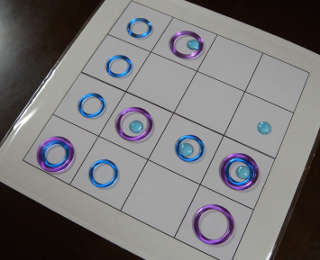
T4 is now playable online: Enjoy the game
- T4: The Japanese version of this page
HISTORY †
T4 (Transparent-Tic-Tac-Toe) is an Impartial Game invented by Masahiro Nakajima, the Curator of 'The Museum of Abstract Strategy Games,' following FlipFlop, RinneTensei, The Ring World (the Award-for-Excellence-winning game at the 7th Game Competition of the Game Amusement Society) and Amoeba. He thought of creating a new game based on Tic-tac-toe with a multi-layered board in the beginning of 2009, but it was in December 2010, when he finally released T4 after some trial and error.
The theme of the game design is "Impartial Game," which is represented by nim. Strategy for Impartial Game tends to be conservative (=try not to lose...) by its nature but he tried to weaken this tendency as much as possible in T4.
BOARD & PIECES †
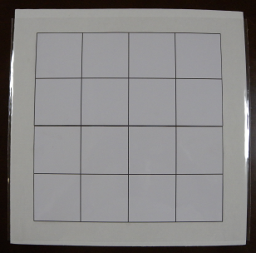
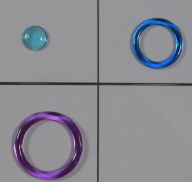
T4 is played between two opponents on a 4x4 square board.
There are 16 units of 3 different kinds of pieces as in the photo, 48 pieces in total. These pieces are available to both the players. No pieces are placed on the board when the game starts.
Players take the following 2 actions in one turn:
- Take one of his/her pieces from outside the board and place it at an empty square on the board, then,
- Move a piece or a set of pieces from one square to another on the board.
Pieces can be placed
- at any empty squares.
- at already-occupied squares in condition that already-placed pieces are different kind(s) from the one that is going to be placed.
Accordingly, how pieces are placed at a square are 7 different ways as follows: 3 different single pieces and 4 different combination (sets) of pieces.
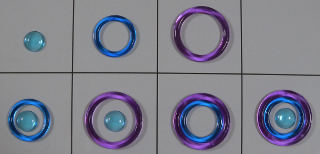
After placing a piece on the board, players move a piece or a set of pieces from a square to another.
Players can choose to move either a single piece or a set of pieces together, but cannot move a single piece out of a set of pieces from a square.
Pieces are moved as Queen in Chess: They can be moved any number of vacant squares diagonally, horizontally, or vertically.
Jumping over other pieces or moving to an already-occupied square is not allowed.
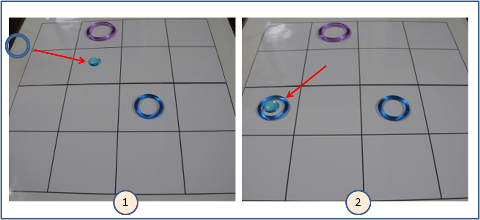
In the photo, the moving piece is the one that has just been placed, but it does not have to be the one: ANY pieces (single pieces and sets of pieces) on the board can be moved.
GOAL †
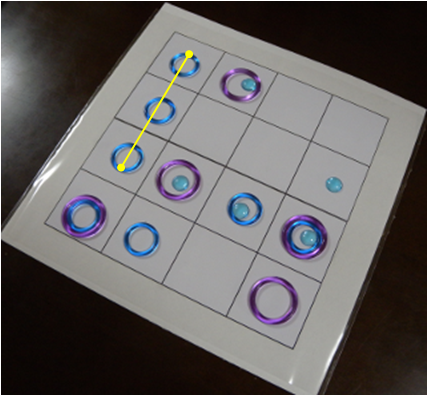
The player who succeeds in placing 3 respective (single) pieces or set of pieces in a horizontal, vertical, or diagonal row wins the game.
The player loses when he/she cannot move his/her piece(s).
The player who places 4 respective pieces or combination of pieces in a horizontal, vertical, or diagonal row loses the game.(This rarely happens.)
T4 never ends in draw.
VARIANT †
You can try the game with four or more different kinds of pieces although the game tends not to finish in a timely manner. Also, playing with different shape or size of boards should be interesting.
NOTE †
Copyright © Masahiro Nakajima 2010, www.nakajim.net 2010, All rights reserved.
SEE ALSO †
